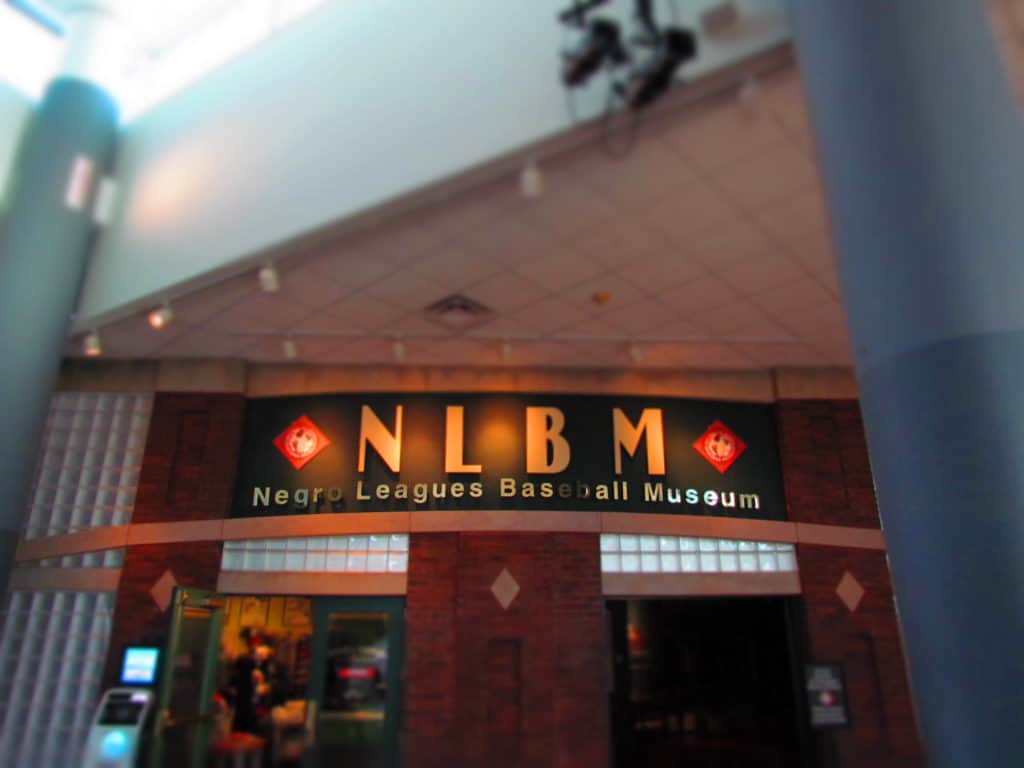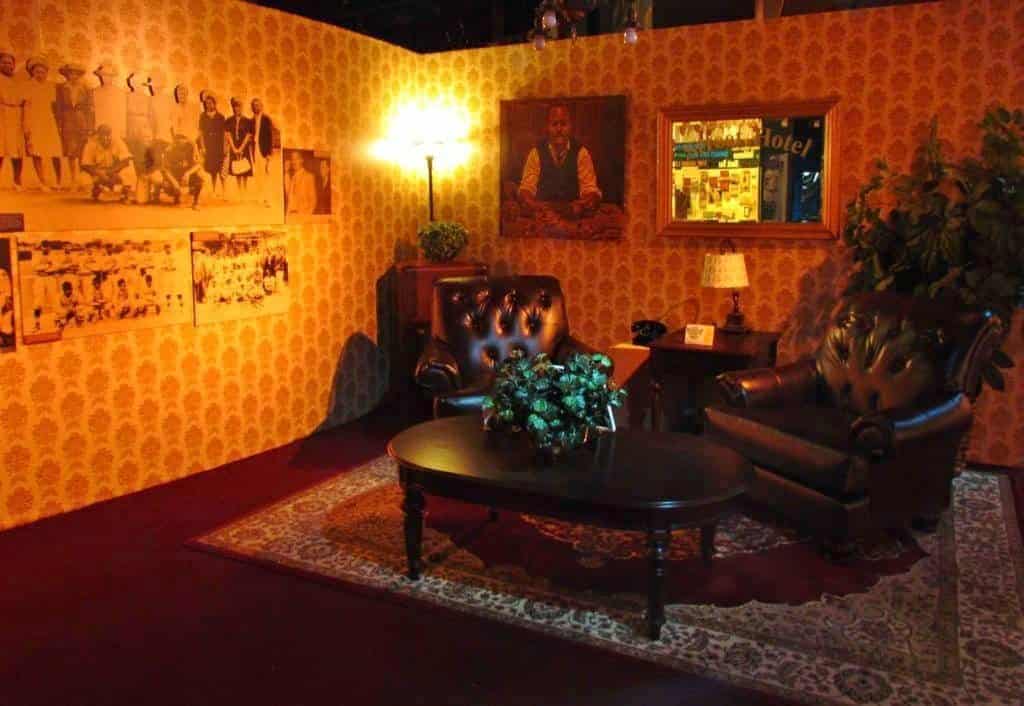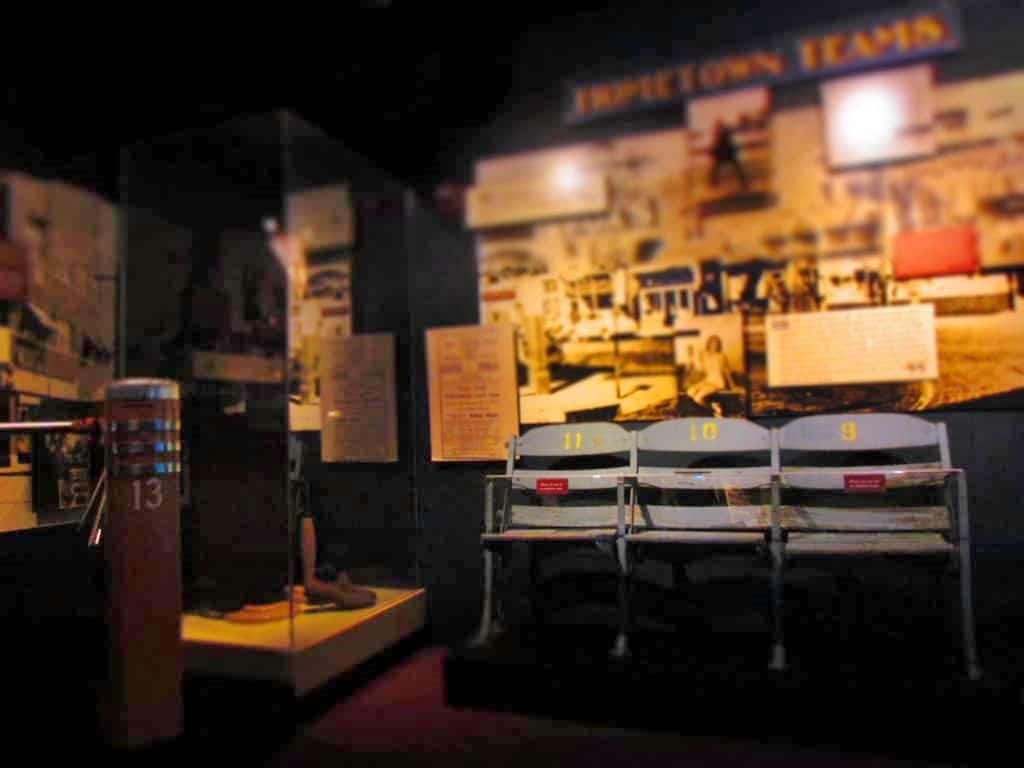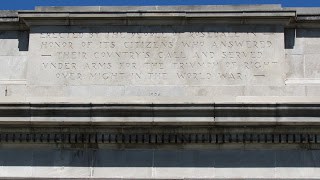Staying at our home base during the holiday season offers us a chance to visit some of the great attractions found throughout Kansas City. A recent visit to the 18th & Vine area gave us an opportunity to meet with Bob Kendrick, the president of the Negro Leagues Baseball Museum. On a chilly Saturday morning, we met with him at the museum to hear more about this often neglected piece of American sports history.
We want to thank the Negro Leagues Baseball Museum for its hospitality. Rest assured that all opinions are our own.

The Negro Leagues Baseball Museum was founded in 1990 and operated out of a tiny one-room office until 1994. By that point, the growing amount of artifacts required a move to a 2,000 square foot space in the Lincoln Building. After a bond issue passed in the late 1990s, a new 50,000 square foot building was constructed to hold the baseball museum, as well as the American Jazz Museum. While both museums operate separately, we highly suggest that visitors block off time to see both. This new dual facility is the showpiece for a complete redevelopment of this historic district, which has many buildings listed on the National Register of Historic Places. Inside its new 10,000 square foot space, the Negro Leagues Baseball Museum has found a home that is more befitting the key role it played in sports and community relations.

Once introductions were made, we headed into the museum to learn more about the league. Most history books have done the American people a disservice by omitting many of the important advancements that originated with the Negro Leagues. Beginning in the late 1800s, a variety of teams were formed by colleges, companies, and even the military. While some players originally found places on white teams, this practice would be abandoned by 1900 due to racism that swept the nation. Although slighted, it would not prevent these players from organizing their own teams, which would travel the country competing with whoever would challenge them. This practice became known as “barnstorming”, and it brought professional baseball to many communities that were not large enough to attract their own team.

After passing through the entrance, the first exhibit is a view of a baseball field filled with statues of some of the greats from throughout the league’s history. Visitors are separated from the field by chicken wire, which represents the segregation that was experienced by black players and fans alike. Bob gave us a rundown of the “greats” who occupied spots around the field. The stories that he imparted helped bring the history of these brave men to life for us. We found our small trio joined by others who had arrived for a visit to the museum. Bob eagerly drew them into the tales, and it was clear that he has a true passion for his mission. We couldn’t have asked for a better tour guide.

Exploring the Negro Leagues Baseball Museum
We passed into the hall that leads toward more exhibits. The museum is laid out in a path around the ball diamond we had seen upon entry. At various points, you can see out onto the field but are always separated from it by some obstacle, just as the ballplayers had been restricted from playing in the major leagues. As we moved along, we could follow the timeline of what occurred in the Negro League, as well as what was happening throughout the United States. This unique look allows visitors to better understand the relationship of external forces in the league.

This portion of the museum is filled with tons of interesting tidbits on players, coaches, and even club owners. Following the timeline, we worked our way to the point where Jackie Robinson became the first black ballplayer to be recruited into the Major Leagues. This was a bittersweet moment for the Negro Leagues, as it was an opportunity to break the color barrier. It eventually led to more black players being taken by other clubs. As the pool of talent was reduced by this move, it spelled the end of the Negro Leagues. The league had officially survived for 40 years and had seen some of the greatest players that ever played the game.

A Stay at the Street Hotel
In the heyday of the Negro Leagues Baseball, the area around 18th and Vine was hopping with activity. When you add in all of the nearby jazz clubs and restaurants, the area was often filled with names that are now familiar to many. Many travelers, including visiting ball teams, would stay at the Street Hotel. This created an atmosphere where many of the greats rubbed elbows with the regulars of the neighborhood. It would not be uncommon for baseball stars to be found deep in conversation with some of the iconic jazz musicians. It was an era where people were reachable and welcomed public appreciation. The Street Hotel was such an integral part of life in the area that the museum has even dedicated a small display to its collection.

We continued through the museum, as Bob explained the changing atmosphere of the country. Even though the color barrier had been broken, it did not mean an immediate acceptance. In fact, the addition of black players to the major League was greeted with boos, hisses, and even death threats. While times were slow to change, the actions that had been set in motion would not be stopped. While it meant an end to the Negro Leagues, it brought true recognition to these baseball greats who had been too long overlooked. We passed by a room filled with lockers, which represented each player from the Negro Leagues who eventually got inducted into Cooperstown’s Baseball Hall of Fame.

Earning Our Way to the Field
Just as black players had to work harder to earn their way into the Major Leagues, we “worked” our way to the field by passing through the annals of history showcased in the museum. Now we stood on the edge of the field and looked out at the 12 statues we had seen from various vantage points in the museum. This was the point that Bob had worked us to, and now it was time for us to say our goodbyes. We thanked him for the fantastic tour, and he released us to explore the museum in further detail. We stood looking out at the players on the field and took in this amazing display. While there is no way for someone to take it all in during a single visit, we learned a little more about the struggles that these generations of people endured. The biggest lesson we learned from this day was perseverance. These players simply wanted to play a game that they loved, and they were willing to forego fame and recognition just to “play ball”. Do you attend any of the games or have a connection with Negro Leagues Baseball? Share your story in the comments section below. Thanks!

Like this article? Share it with your friends!





